Easiest Homemade French Fries
If you’ve been keeping up with us, you have noticed seen a number of french fry related posts happening, and today is no different! We’ve covered the standard double fry method, and what oil to use, and today we’re talking about an easier way to do things.
Homemade french fries are delicious but can be a bother
The standard double-fry method can be a bit of a bother, especially for something we often associate with “fast food.” Yes, the cutting, rinsing, soaking, frying, sitting, and re-frying is a lot to go through, especially if you’re pressed for time. Can we get fries that need less attention but are still golden, crisp, potato-y and delicious?
A method for simplifying homemade french fries
The folks over at America’s Test Kitchen have come up with this method for Easier French Fries. it is a one-step process that significantly lessens the difficulty of putting fries on the table, and is supposed to retain all the things we look for in a homemade french fry.
The process is simple: cut Yukon Gold potatoes into 1/4″ square fries, place them in a pot with room temp oil to just cover, and turn on the heat. Once the fries come to a rolling boil, let them cook undisturbed for 15 minutes (use a TimeStack® to keep an eye on the time!), then stir them and cook until golden brown and delicious. It really is remarkably easy. All we need to do is make sure that the oil temp doesn’t ever get too high. According to America’s Test Kitchen, the oil never goes above 280°F (138°C). Because the temperature will be rising throughout the process, we don’t need to monitor it constantly. We will use our Thermapen® to get accurate, fast periodic readings once the oil starts to ‘boil.’
What’s going on here?
For this method, Yukon Gold potatoes are used. Floury varieties like Russet just don’t work for it, because of their high starch content. This lower, cooler cooking method doesn’t allow the starch granules to react in the way we want them to, and we are left with hollow, rather than fluffy, fries. The lower starch content of the Yukon Golds will result in a creamy center, instead of the normal fluffy one. This change in texture provides an interesting contrast to your everyday fry and is well worth trying out.
When we bring oil up to temp with the fries in it, the potatoes cook along the way. If we were to agitate them, they’d break apart because of how they soften while cooking—hence the need to leave them alone for 15 minutes in the pot once they come to a boil. As they cook for those 15 minutes, the potatoes are softening, but then the exterior is actually dehydrating—it’s frying to a crisp. In essence, all the structure of these french fries comes from the crispy crust. Once that crust has started to form, the fries can be stirred and moved around without fear of breaking them.
Bonus: fries with less oil
You may think that the method will result in greasier, oil sodden fries, but you would be wrong. America’s Test Kitchen explains it this way:
“Fries absorb oil two ways. As the potatoes cook, they lose moisture near their surface, which is replaced by oil. Then, as they cool after being removed from the hot grease, oil from their exterior gets pulled in. Because our cold-start method cooks the fries more gently, less moisture is lost (but enough so the fries stay crisp) and less oil is absorbed during frying.”
They actually sent a regular fry and an Easy-method fry off to an independent laboratory for testing and found that the Easy-method fry came back with 13% less absorbed oil.
Note:
There is one caveat to these fries and it is this: These fries don’t stay crisp for a very long time. They should be eaten right away, as soon as they don’t burn your mouth. But then, that’s how all fries are best anyhow!
Also, all of you that were wondering about using a different oil in your frying, this is a great way to experiment. The lower temperature will keep it below many smoke points, so try a flavored oil if you like.
Easiest Homemade French Fries Recipe
Based on Easier French Fries, by America’s Test Kitchen
Ingredients:
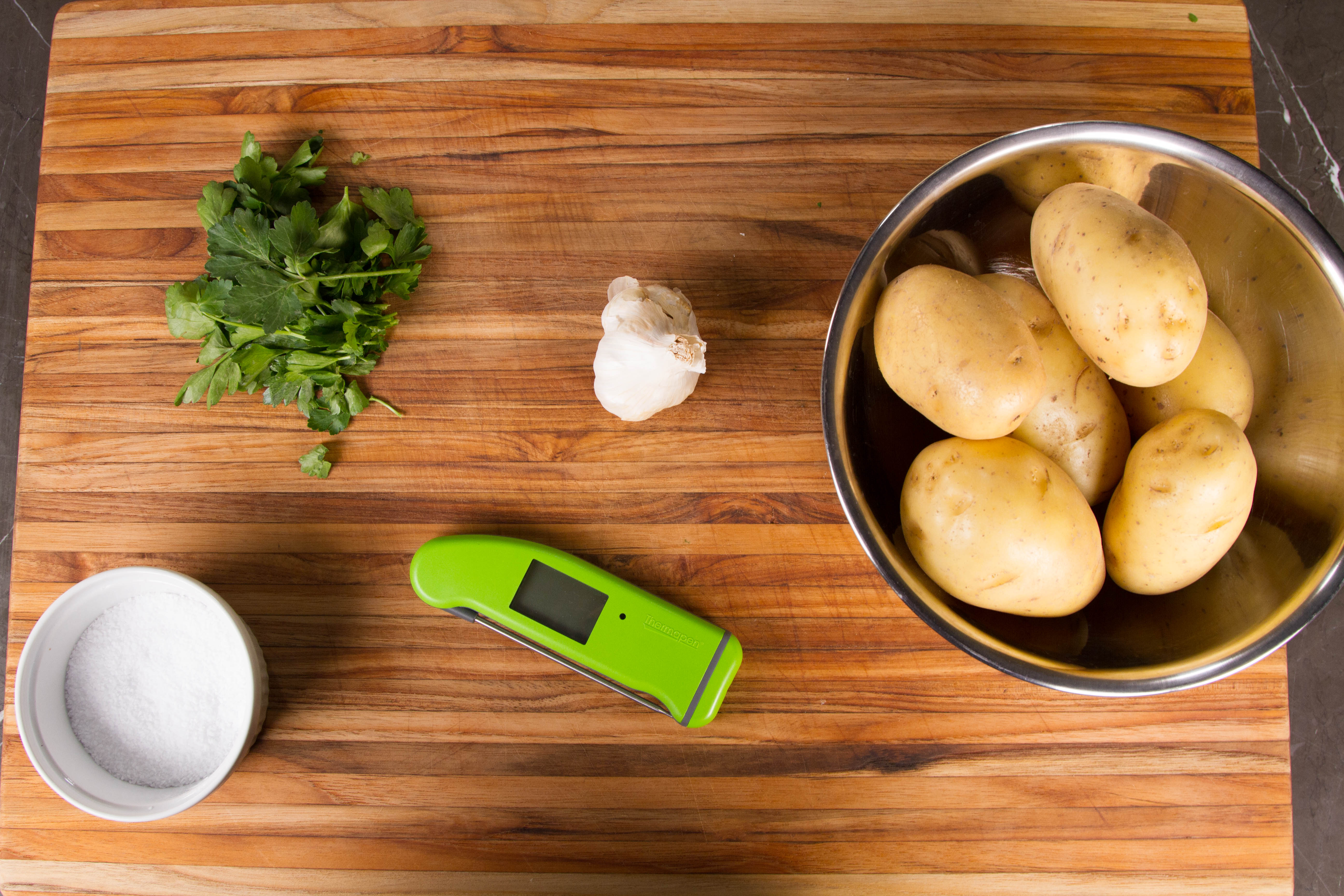
- 2 ½ lb Yukon Gold potatoes
- 6 cups peanut oil
- ½ cup bacon grease (optional)
- salt
- Optional seasonings (I like fresh parsley and minced garlic)
Instructions:
- Square off potatoes and cut into ¼” x ¼” french fries.This size is important for proper cooking in this method.
- Put fries in a large pot with the room-temp oil and (if using) bacon grease.
- Turn on heat to high.
- After about 5 minutes, the oil will have come to a rolling boil. Once the oil arrives at a rolling boil, set your TimeStack for 15 minutes and let the fries cook undisturbed.
- After the allotted time, stir the fries—some will have browned more on the bottom, that is fine.
- Allow the fries to cook for another 10 minutes or so, until they are golden and crisp. Spot check your oil occasionally with a Thermapen to be sure that the oil isn’t getting too hot. It should never get above 280°F (138°C). If it does, lower your heat a little bit.
- Once the fries are crisp, drain them on paper towels, salt and/or season them and enjoy immediately!
There you have it, the easiest homemade french fries ever! These fries have a light, almost tempura-like crispness that is easy to achieve. Just remember to use your Thermapen to keep an accurate eye on the oil temperature and a TimeStack to get that crust!
For more on french fries, check out our other posts on the topic!
 |
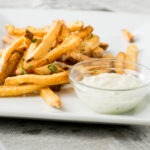 |
|---|
Products used:


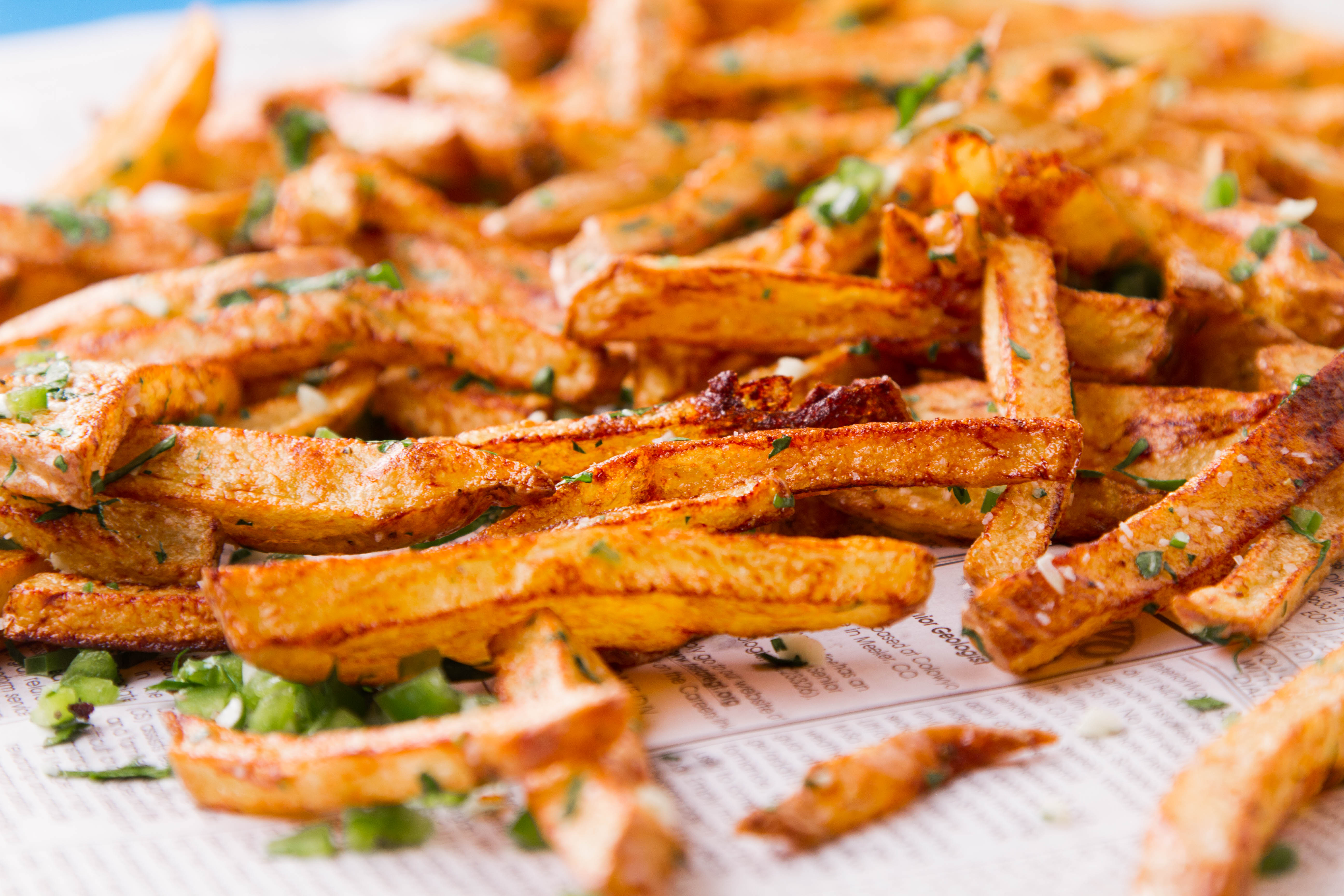
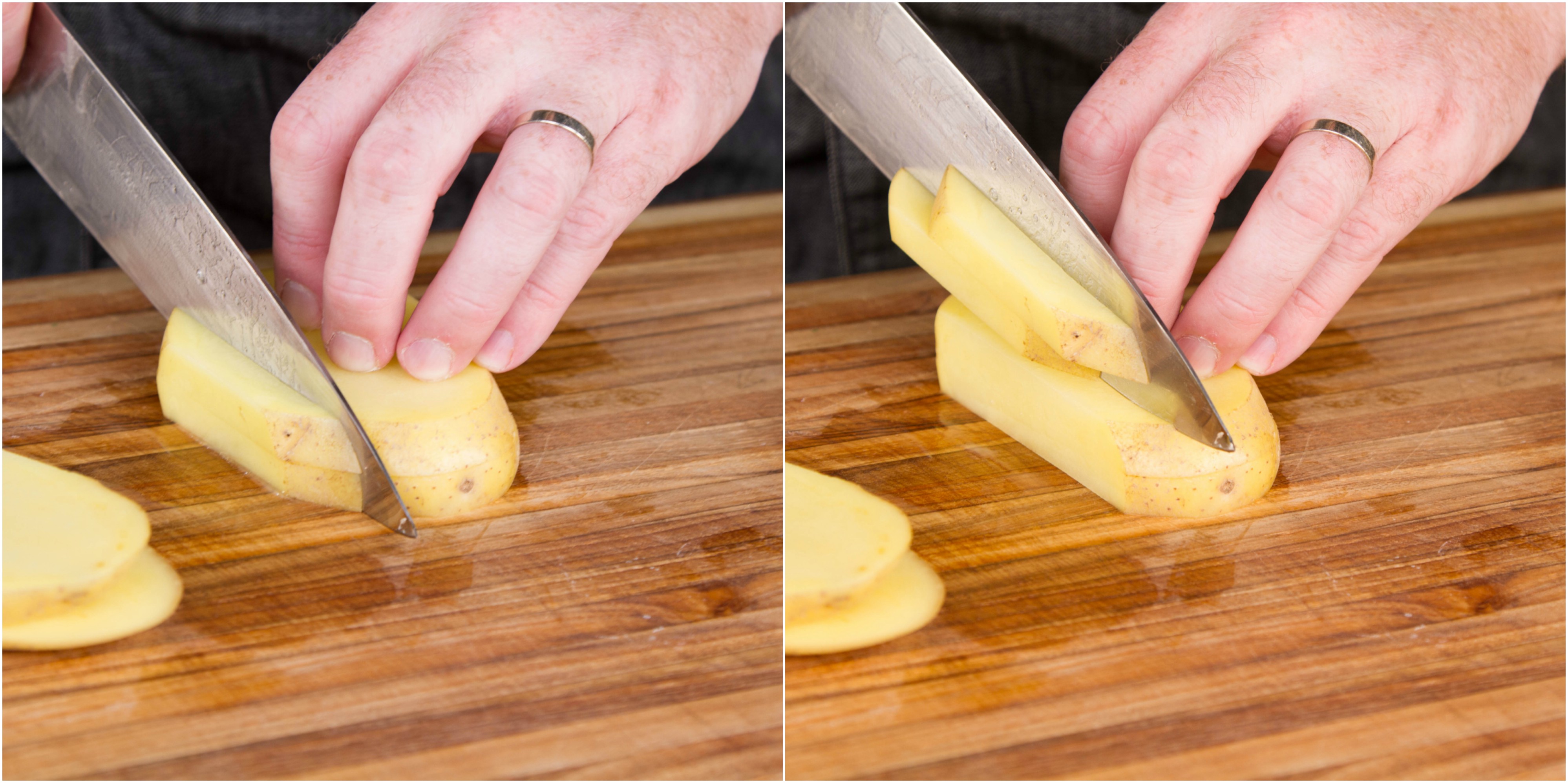
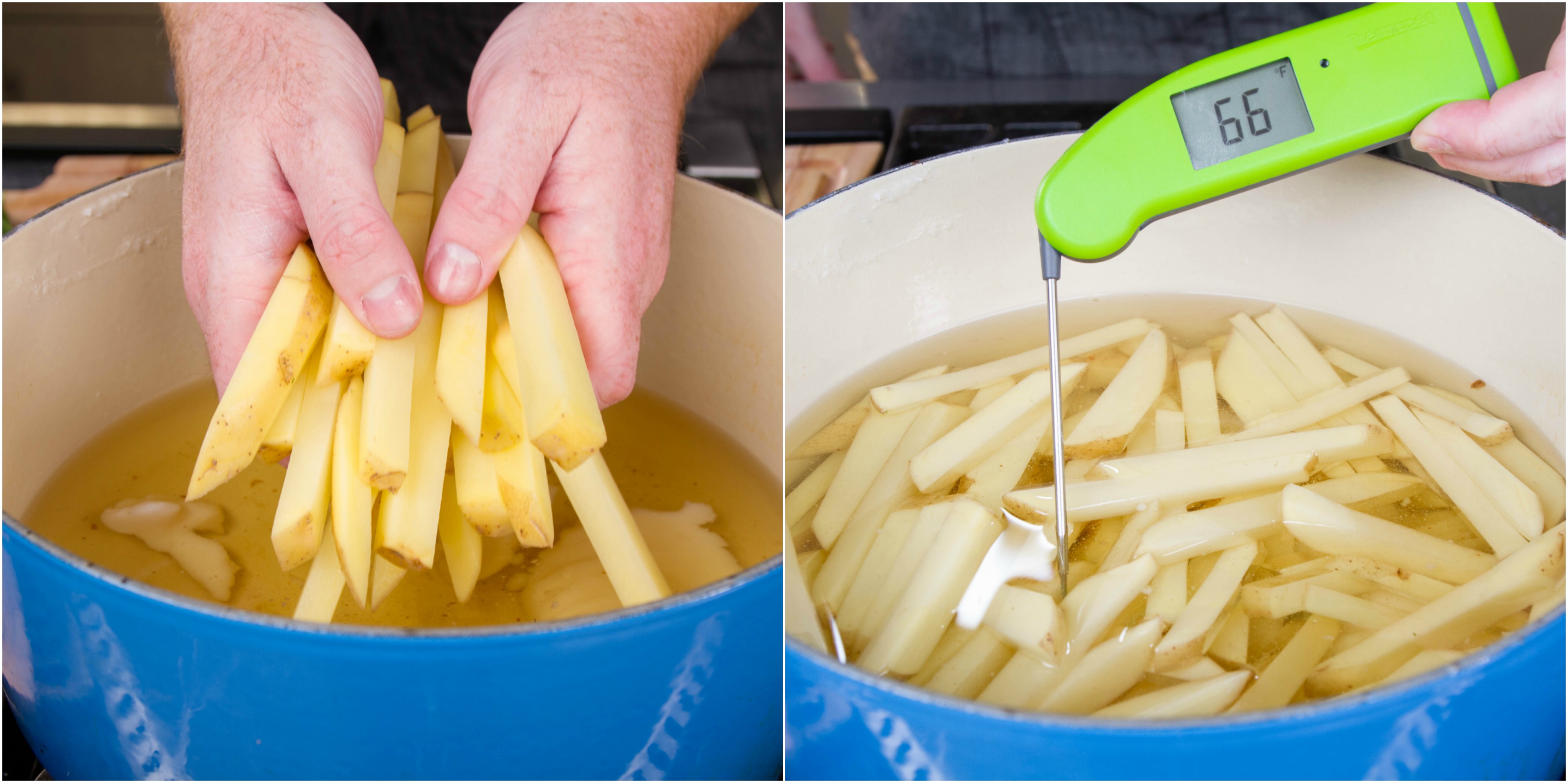
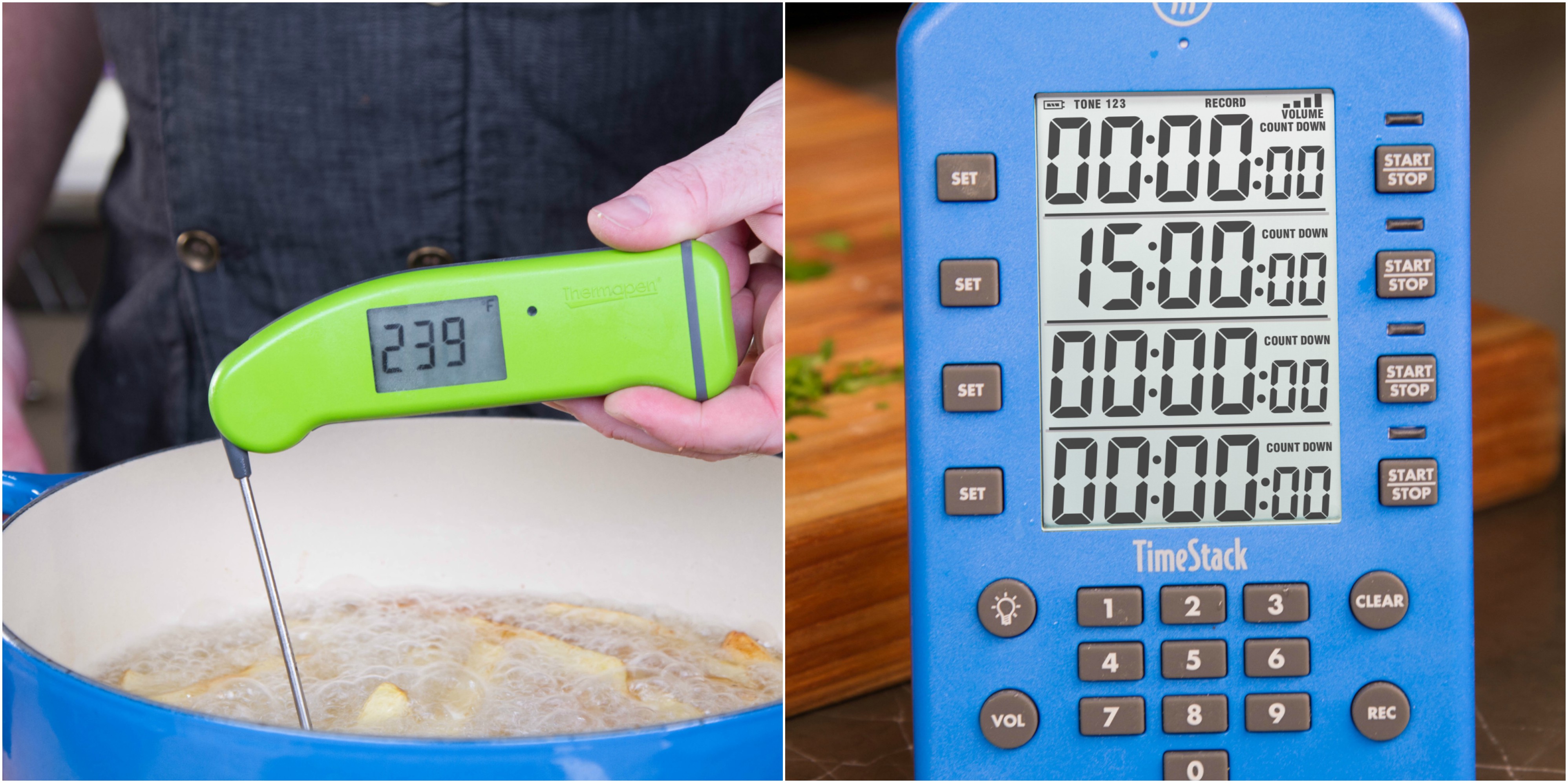
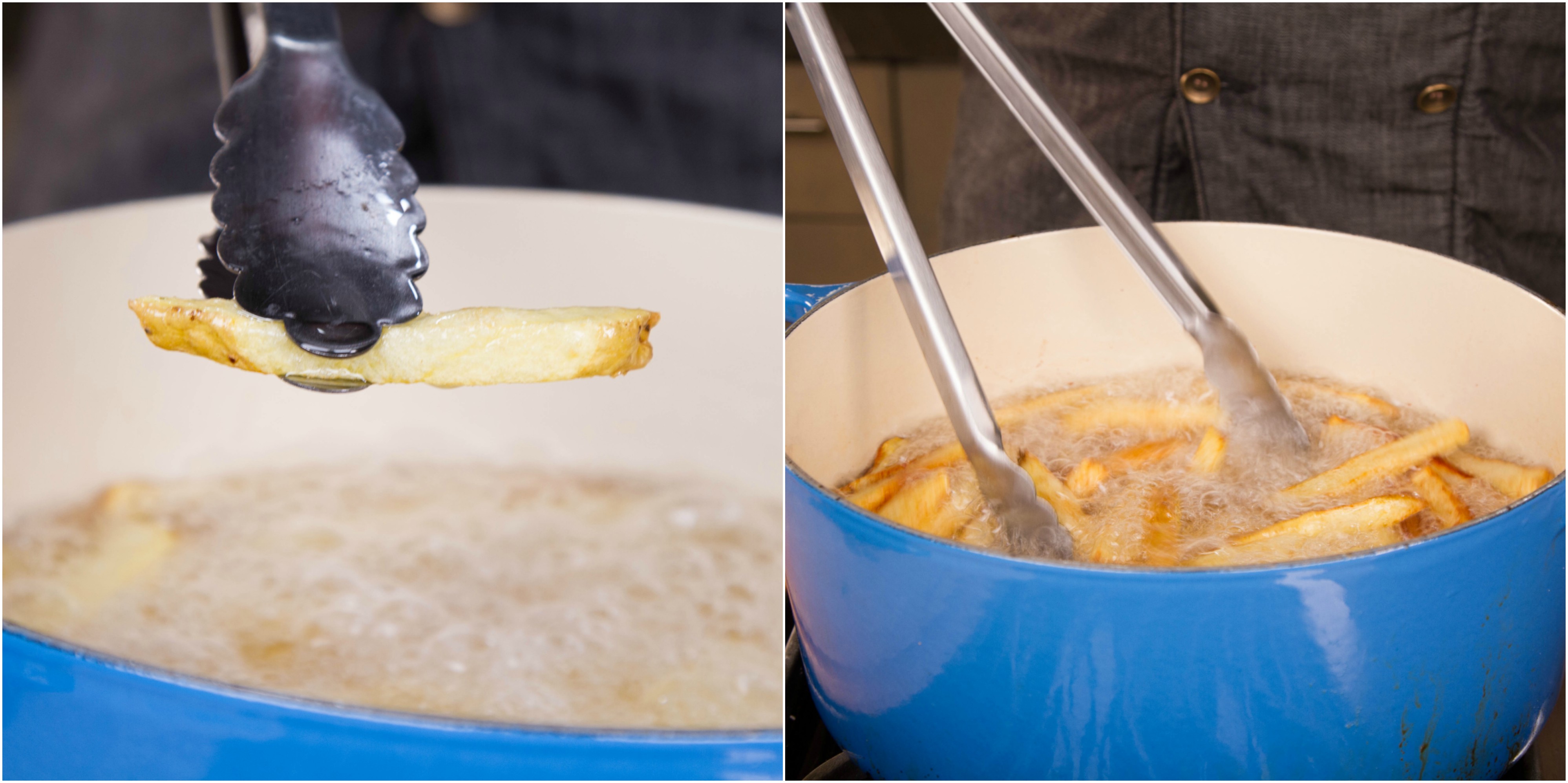
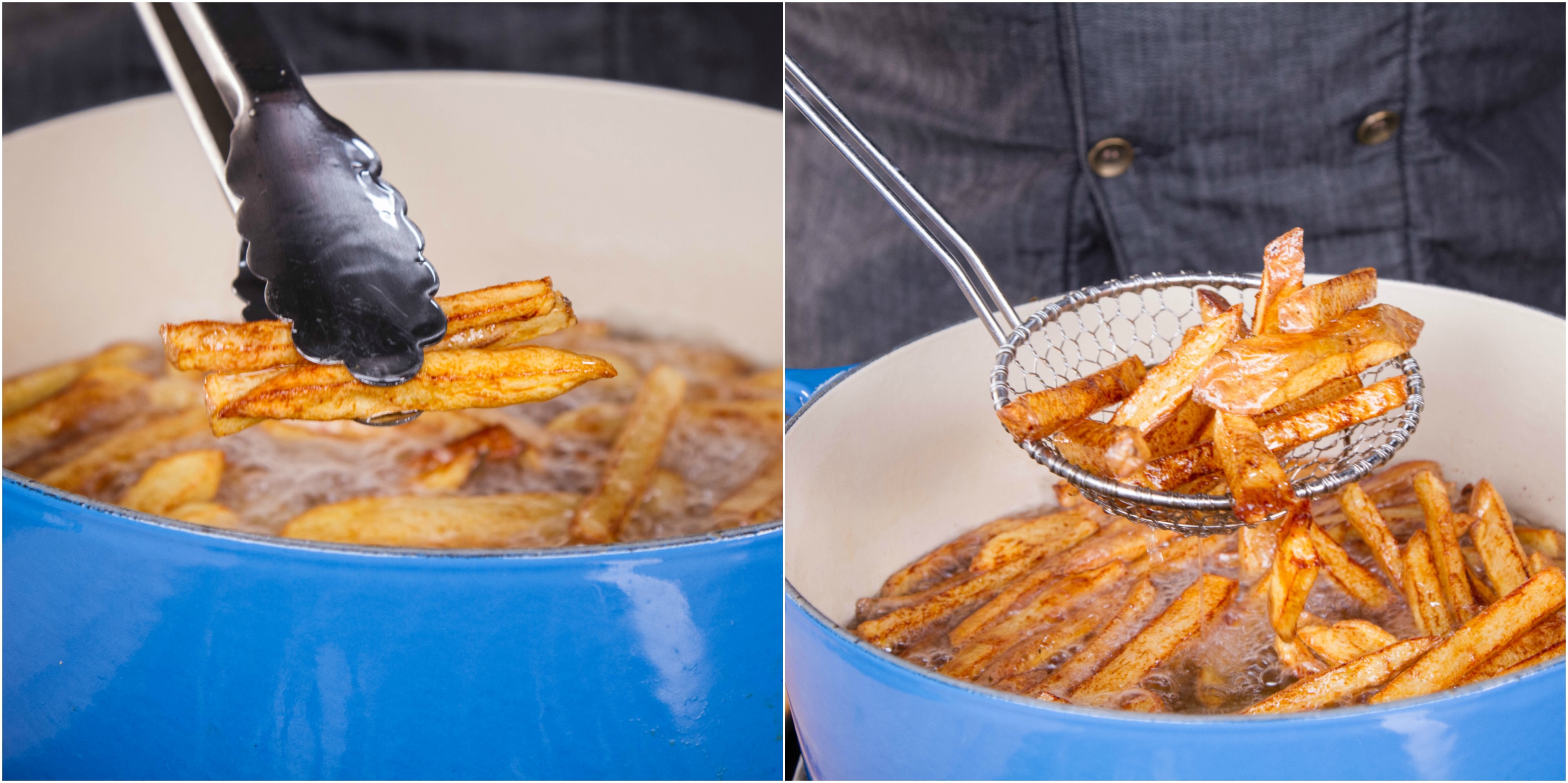
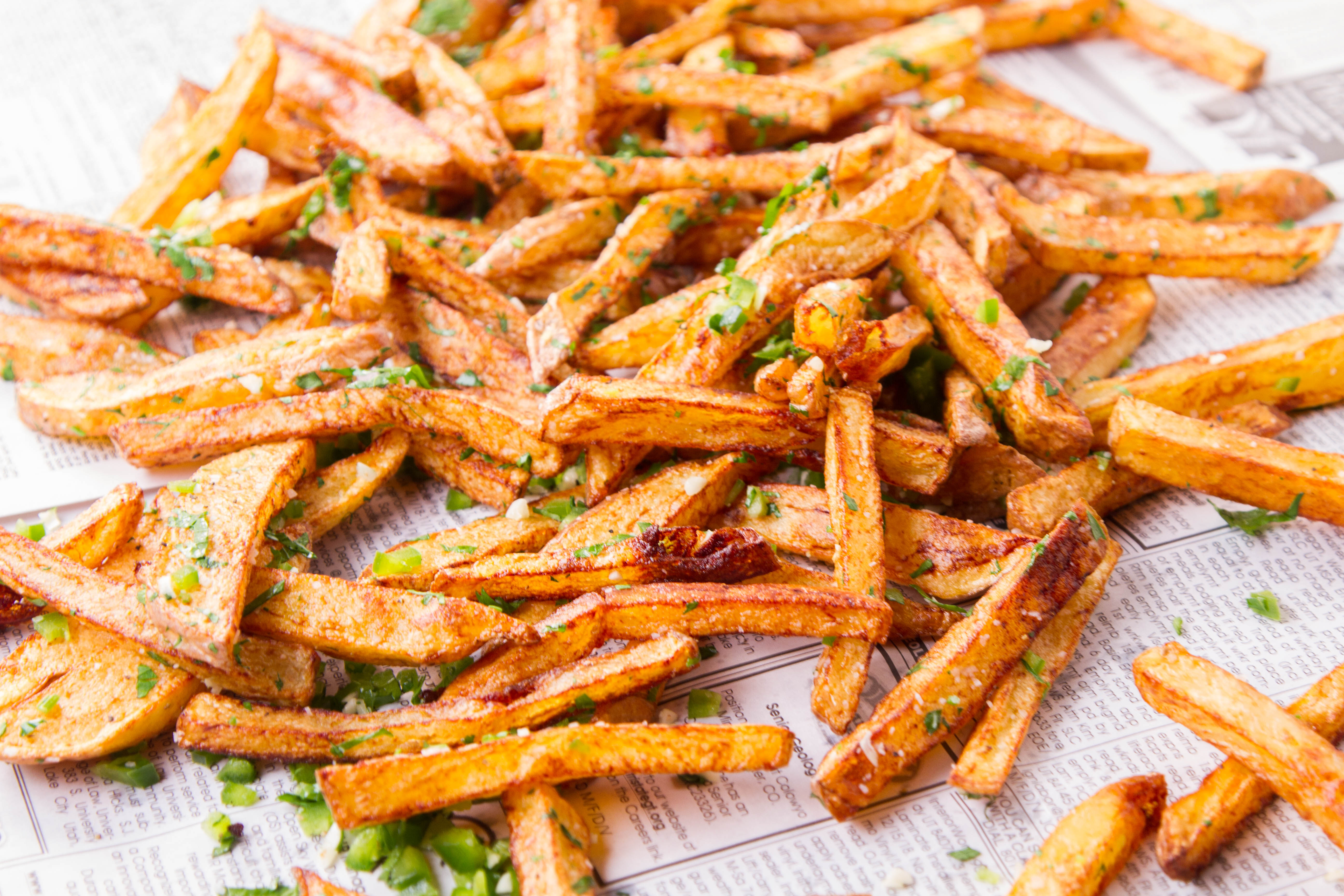
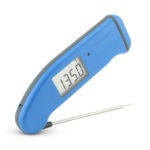

“Square off potatoes and cut into ¼” x ¼” french fries.”
Unless the person cutting those taters is a small child, or otherwise has really tiny hands, those fries area a LOT bigger than ¼” x ¼”. Probably more like 3/8″ x 3/8″, at least. Look at a ruler- ¼” x ¼” is really VERY skinny.
The second caveat is that this method is limited to a single batch.
Galen,
You know, I honestly hadn’t thought of that. Spot on!
Great idea but I am trying to avoid deep frying any foods. I would make a few slight adjustments to this recipe to achieve the same result without frying immersed in oil. After cutting up all the potatoes, I would drizzle oil after seasoning and mix them up to make sure all are coated. ThennI would spread potatoes out on an oven tray and cook until crisp. Same effect but less soaking in oil.
Maria,
If you are trying to avoid the deep fryer, this is an excellent way to do make fries. They won’t be quite as crisp, but they will still be very tasty!
This all sounds just wonderful, simple, and effective. But I will ask as I have on several other web sites,”What do I do with the oil? How do I keep it? Does it have to be peanut oil?” But what I am most interested in is the first question: What do I do with the oil? I refuse to buy it, use it once, and then pitch it. And just once, I’d like a response………thanks.
Gae,
Then a response you shall have!
Fryer oil is problematic for the home cook, it’s true. By all means, you should use fryer oil more than once. When I deep fry at home, I usually leave the oil in the pot on my stove with a lid on it and try to fry a few times in that week or two before disposing of it (more on that later).
If you don’t want it sitting on your stove taking up space, it can be cooled and funneled back into its original container for storage. If you don’t mind an extra step, it’s a good idea to strain the oil through a coffee filter or a fine-mesh sieve. Once in the container, I suggest marking it with something like “fried fries” so you know not to use it for baking projects. If you’ve fried onion rings in it, you won’t want to fry donuts in it—but going from donuts to onion rings is not bad at all!
Keep the oil in the cupboard just like you would any oil. When you want fries again, just pour it into a pot and have at it. When you cool it again and put it back in its bottle, add a check mark to the bottle so you can keep track of how many times you’ve used it. You can get several fry-sessions out of your oil if you are careful to never let it get to its smoke point.
When the oil smells rancid or is thick and/or dark, put it in its original bottle, cap it tightly, and throw it out with your garbage. If you have used a lot of oil (for, say, frying a turkey), you might consider looking into oil recycling. Many cities have oil reclamation centers and they will gladly take your used oil.
And to answer the other part of your question, no it doesn’t have to be peanut oil, but it is widely regarded as superior for its lightness, availability, and relatively low cost in conjunction with its high smoke point. Corn oil is also a great frying oil.
I hope that helps, and if I haven’t covered anything you’d like to know, please feel free to write in again and ask.
Happy cooking!
I have been using this method of making fries for many years. Believe it or not, white potatoes work better than Yukon Gold or anything else I’ve tried! Also, instead of bacon grease, I add duck fat to peanut oil, and then brush the just-cooked fries with a little inexpensive truffle oil, before adding salt, a little granulated garlic, and sometimes a dash of fennel pollen.
Jim,
Those sound delicious! Keep up the good cooking!